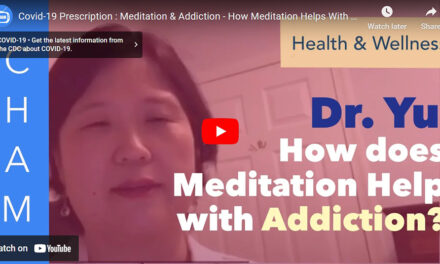
Researcher Kim, M. S. Teacher, Busan Shinjung High School
Published: Academic Society of Human Completion Vol. 5
Published year: 2014
One student out of every 100 students among approximately 68000 school students (elementary, middle, and high schools) has dropped out of school. In particular to high school students, two out of every 100 students quit; and for a half of these students, it was due to school maladaptation. Currently, the major school problems which contribute to the dropout rates consisted of school violence, bullying, academic stress, etc.
Even though schools institute many strategies to assist maladaptation for at-risk students, the dropout rates increase every year. Then, what would be a definite solution for helping these maladaptive students? With this question in mind, Ma-eum Su-ryun program was initiated. Through objectively viewing and cleansing away the students’ own causes for their maladaptation, this study confirmed that in a relatively short time, Ma-eum Su-ryun is a very effective and systematic method to cause changes in these students.
Purpose of study
- To find negative inner mind by objectively self-reflecting.
- To seek positive transformation of attitudes and behaviors through repeatedly cleansing negative mindsets.
Study questions
Does the Ma-eum Su-ryun program lead to changes in attitudes and behaviors in high school students?
Study methods
1) Study procedure
Starting in 2012, 4 students started Ma-eum Su-ryun program at a local meditation center for a time duration of 2 to 4 months. Interviews and questionnaires were used for evaluating changes in these students. In 2013, students participated in Ma-eum Su-ryun program at school and were observed for any changes in mindset, attitudes, and behaviors as a result of the program.
2) Study method
Case study and qualitative research approaches were used in this study based on student interviews and opinions, questionnaires, phone interviews with parents and Ma-eum Su-ryun program instructors.
3) Participants and time duration
Two male students and two female students (all 12th graders) participated in 2012; and 130 students (10th graders) and 10 students (11th graders) in 2013 participated in this study.
- March 2, 2012 to Oct 31, 2012 (4 students in 12th grade)
- March 2, 2013 to Nov. 30, 2013 (15 students in 10th and 11th grade)
- March 2, 2013 to July 20, 2013 (120 students in 10th grade)
- Sept. 3, 2013 to Nov. 31, 2013 (5 students in 10th grade)
Study results
1. Case study: a student with severe bipolar disorder
1) Initial interview
K had a difficulty with peer and teacher relationships in school due to his severe bipolar disorder. He was under psychiatric care with many attempts at counseling in the past which didn’t seem to help him.
2) Participating in the program
His parents were counseled about this issue. His mother stated that when she was pregnant with him, she was depressed with much anxiety and was in severe psychological pain due to problems with her husband. With consents of his parents, this student started the program after school. About 4 months from April to September of 2012, he attended the program twice a week (first and second level of the program were completed during this time frame). He was able to self-reflect from an objective point of view on how he had lived for each age, time and incidence, and bring them up in his mind to cleanse them away. He focused on the causes of his bipolar disorder, which were his parents’ divorce, poor home environment, and other related pictures of his mind, and repeatedly cleansed them away.
3) Results
His facial expression became bright and relationships with other students improved with better school adjustment. He was able to graduate from the high school and able to attend college. His parents were grateful for his positives changes and expressed gratitude to his instructor.
2. Case study: a student with kleptomania
1) Initial interview
Y had a kleptomania history and had stolen some items from school and home in the past. In April, he was found to be stealing from school and was punished to perform certain school duties for a week. Because of his chronic nervousness and tendency to lie, his parents were counseled a few times.
2) Participating in the program
After the stealing incident, he and his parents were counseled. In addition, he attended the program to find the mind of kleptomania and cleansed his mind of it, in order to change his behaviors. From April to June of 2012, he attended the program daily after school for about 3 months, one hour each session. He followed the method and self-reflected on his life since birth to repeatedly cleanse his mind, especially incidences related to kleptomania. He was counseled by his instructor multiple times about mindsets he had found while attending the program.
3) Result
Y stopped stealing from school and home and he seemed more relaxed. After the college entrance exam was taken, he started to work part-time at a restaurant and he is currently attending college without any incidents.
3. Case study: a suicidal student
1) Initial interview
K always seemed happy and studied diligently but two consecutive emotional assessment score results showed that he was a high-risk for suicide. Due to this, K and his parents were counseled. His mother stated that when she was pregnant with him, she was depressed, anxious, and had many thoughts about suicide due to problems with her husband. K stated that in his childhood, he was anxious, depressed and felt lonely while living with his grandmother due to his parents’ divorce.
2) Participating in the program
From June to July, 2012, he attended the program for about 2 months and self-reflected on his life since birth to cleanse away remembered thoughts, experiences, images, especially about his parents (various images of his parents) through the first and second level Ma-eum Su-ryunmethod. After attending the program, K was counseled by his instructor about his inner self he had discovered during the program; and K commented on his experience. In his school, he was continuously counseled to cleanse away negative mindsets.
3) Result
K’s facial expression became brighter and suicidal thoughts disappeared. He stated, “The world exists as it is; I felt foolish that because of wrongful mind he had taken inside himself, he thought about suicide.” This student graduated from the high school and was able to receive a scholarship to attend an engineering college at Busan University.
Conclusion and Recommendations
The Ma-eum Su-ryun program practices repeatedly cleansing away negative mindsets and behaviors after students self-reflect objectively on their lived life. As one brings up his life chronologically, every incident, memory, picture and image at a time are thrown away, and he would know the causes of those minds. Repetitions of the cleansing lead to blurring of these images which aides in cleansing those minds. When negative mindsets are thrown away, he won’t be behaving negatively anymore, so naturally positive behavioral changes can occur.
Other case studies from 12th graders in 2012, and 10th and 11th graders in 2013 also confirmed similar results. The investigator see the program as one of fundamental solutions, in which maladaptive students can positively change in mindset, attitude, and behaviors through finding the original causes of their problems to cleanse away.
Unlike transient improvements occurring via medications, counseling or similar treatments, the detailed and systematic Ma-eum Su-ryunmethod changes mindset of students which leads to changes in their behaviors, through objectively self-reflecting to understand one’s own maladaptive problems, and leading to change in perceptions and mindsets.
In order for theMa-eum Su-ryun program to be utilized within schools, school teachers need to be trained first in order to become positive selves with a big universe mind. Then, rather than just simply empathizing and connecting via counseling, each teacher can understand his students better. Further, he can acknowledge and comprehend each student’s inner mind and assist students to objectively self-reflect to throw away negative and wrongful mindsets.
Source: www.meditationlife.org





